May in the garden: plant and prepare…
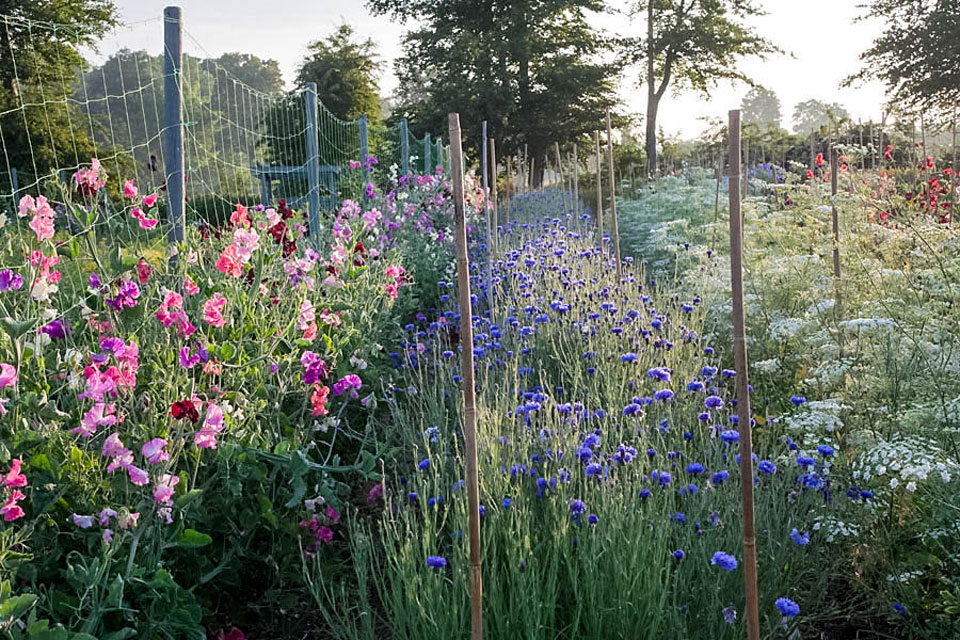
After months of hard work, you will begin to see your efforts in the garden pay off. In May new colours will begin to emerge as roses undergo some serious flowering. Vegetable patches will begin to show signs of growth and wildlife will continue to keep busy amongst the new blooms. Whilst there’s still lots to do in the garden this month, make sure to take a step back and admire all you have achieved so far this year.
Sow Courgettes Now
Courgettes, like marrows, are vegetables whose seed you shouldn’t sow outside until the danger of real frost has gone, and the soil is warming up. You should sow the seed, ideally with individual seeds spaced and lying on their side, in a warm sunny spot – either in your veg garden or, if space is limited, in a container with lots of compost rich soil.
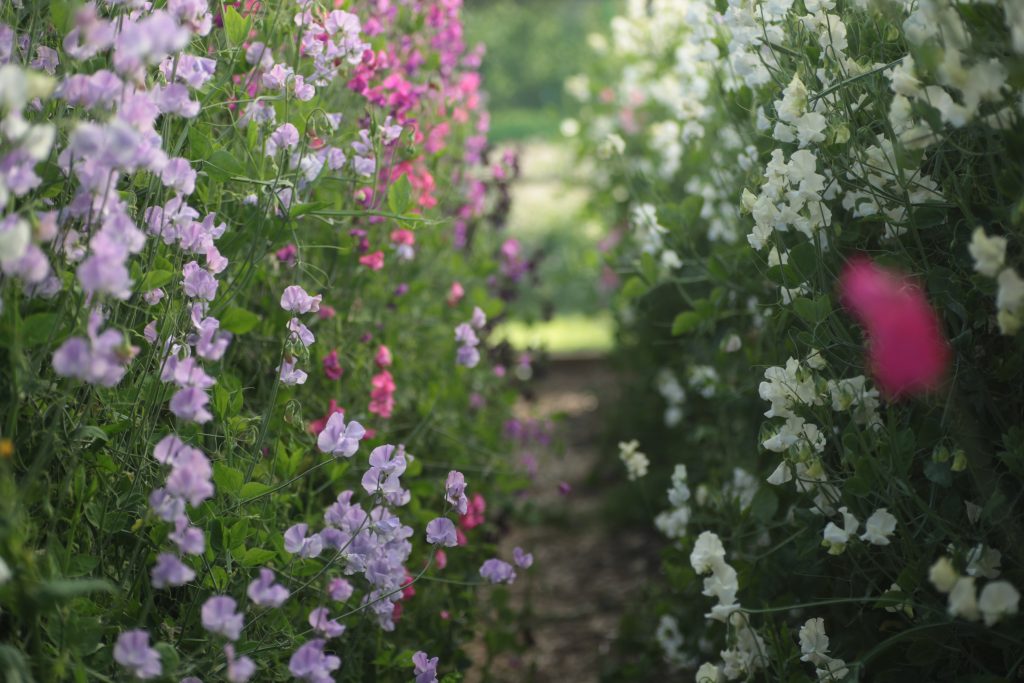
Green and Gorgeous, Oxfordshire
Sow Sweet Peas
Take advantage of the next week or two to sow sweet pea seed straight into the ground, (or a container if that’s where they’re going to grow) before it is too late. Not sure where to start? Watch this how to do video by Garden Owner, Griselda Kerr for some handy tips and tricks.
Support Sweet Peas
You might have just sown sweet pea seed, have seedlings of your own in the greenhouse, or have just purchased young plants. All of these will need supports to climb up, and the sooner you get them in place, the better. A simple solution is to use netting between wooden posts, but you can easily do something more decorative. Trellis is ideal, and the plants also look great trained up an obelisk type frame, or in among other plants in a border.
Sow Beetroot Seed
It’s not too late to sow beetroot seed. Make sure the soil you’re sowing into has got plenty of well-rotted manure or compost, as beetroot does not like heavy clay soil, and sow the seed about 1.5 cms deep in rows about 20cms apart.
Earth Up Potatoes
Earth up potatoes by pulling a hoe along both sides of your row of young plants, so that you make a mound of soil along the row, to ensure that the growing tubers do not get exposed to light. If they do, the skins will be green, and you won’t be able to eat them.
Plan Your Window Boxes
You’re probably about to plant your window boxes for summer, so remember two simple things that will help give you healthy plants for a long time: put broken crocks or gravel in the bottom to assist good drainage and mix a handful of slow-release fertiliser into the potting mixture you’re going to plant into.
Prune Japanese Quince
Japanese quince (chaenomeles) of all varieties should be pruned after they have flowered, and this is the right time to do it. The main aim is to prune the stems that are more than a year old, as these will produce the flowers for next year
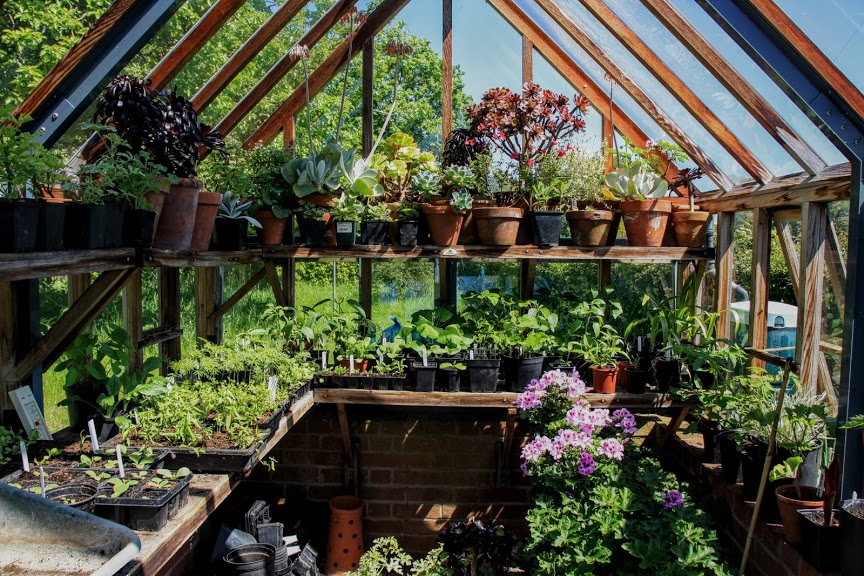
Glebe House, Monmouthshire
Busy, Busy
This is a very busy time if you have a greenhouse. You should be potting on young plants that are going to be planted out in late-May, and if they are to go into containers or hanging baskets, it is worth planting them there now, and keeping them in your greenhouse so they get established in their new situation.
Sow Hardy Annuals
Sow the seed of hardy annuals flowers such as anagalis, (baby blue-eyes) straight into the places you want them to grow. This is great for filling gaps, just sprinkle the seeds into the gap, gently rake them in, and water.
Keep an Eye on Your Roses
Roses are poised for serious growth and flowering, and the lush new stems and foliage produced by the ample rain are tempting to bugs and disease such as mildew. So, keep a close eye, and if possible, give them a good spray now with a combined feed and pest control.
Don’t Put the Hoe Away
With the soil warming up after months of rain, weeds are fully armed for a serious outbreak. In borders, vigilant hoeing while the weeds are still seedlings will keep them under control until your plants grow and crowd them out later in the summer.
Sow Vegetable Seeds
May is a busy seed-sowing month, as ground conditions are perfect for germination. One important group to get in now are vegetables like carrots that will ripen for harvest in late autumn and will be ready to be lifted from the ground and stored during winter. Carrot seed should be sown very thinly into a prepared seedbed.
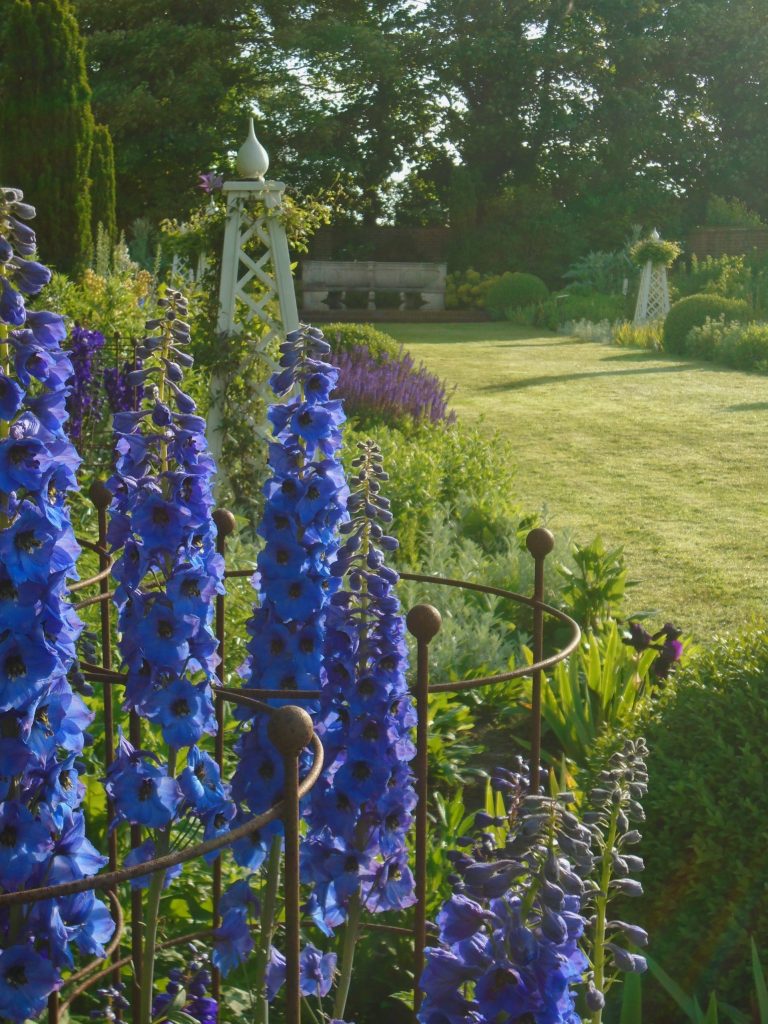
Old Bladbean Stud, Kent
Stake Your Delphiniums
Delphiniums, and for that matter, other similarly tall-growing border plants, will be putting on enough height for you to place supports now. It is a job much better done early, even if the supports will be visible for a week or two. By staking them now, you won’t damage your plants, and they will soon hide any frames with their foliage.
Put Out Sweet Pea Plants
It is safe to put young sweet pea plants outside now. They will need support, perhaps from bamboo canes, wire or netting, and will need to be tied up with garden twine to start with. Grown over a natural wood wigwam, they make a great addition to fill a gap in a border. Depending on the size of wigwam you use, plant anything from three to six plants around the base, add some compost, and water them. Keep tying in the growing new stems until they’re firmly attached.
Sow Runner Bean Seed
If you have a cold frame, sow your runner bean seeds there, and then move the young plants out to their growing plot in June. This will help you have strong plants and an early crop. Alternatively, you can sow the seed in a cool greenhouse.
Lift Tulip Bulbs
If you have planted tulips in a bed, border, or tub, they have probably finished flowering now. Where you want to put in some summer bedding, you should lift the tulip bulbs for storage during the next week or two. Dig them out carefully with a fork or hand fork, cut off the stems, clean off mud, and store them on trays in a cool dry place, ready for replanting in November. If you only need to tidy the plants, just cut off the stems, and leave the bulbs.
Trim Early Flowering Perennials
Spring and early-summer flowering perennials will have finished blooming now, but a number of them, such as pulmonarias and brunnera, have very good foliage. If you trim off the dead flower stems with secateurs to reveal the leaves, the plants will continue to be a feature through the summer.
Watch Out for Whitefly
Wet, warm weather in early summer, followed by a few days of hot sun, will create the ideal conditions for whitefly to breed. So be vigilant, remember that early action always pays dividends, and treat any outbreak in the greenhouse immediately.
Mowing Over Bulbs
If you haven’t done so already, you can happily mow off grass where early-spring bulbs like snowdrops and crocus have flowered. Although daffodils have been looking awful for a couple of weeks now, resist the temptation to mow them off until June, if you can. You’ll get better flowers next year if you do.
Plant Out Courgettes
If you have raised young plants of courgettes or marrows in the greenhouse, and they are hardened off, they can now be planted out in rows in the veg patch. They can also be put into a container, as they are very decorative plants. Make sure there is lots of compost or rotted manure in the soil.
Divide House Plants
This is a good time of year to divide house plants that have become pot bound, as an alternative to moving a mature plant into a larger pot.
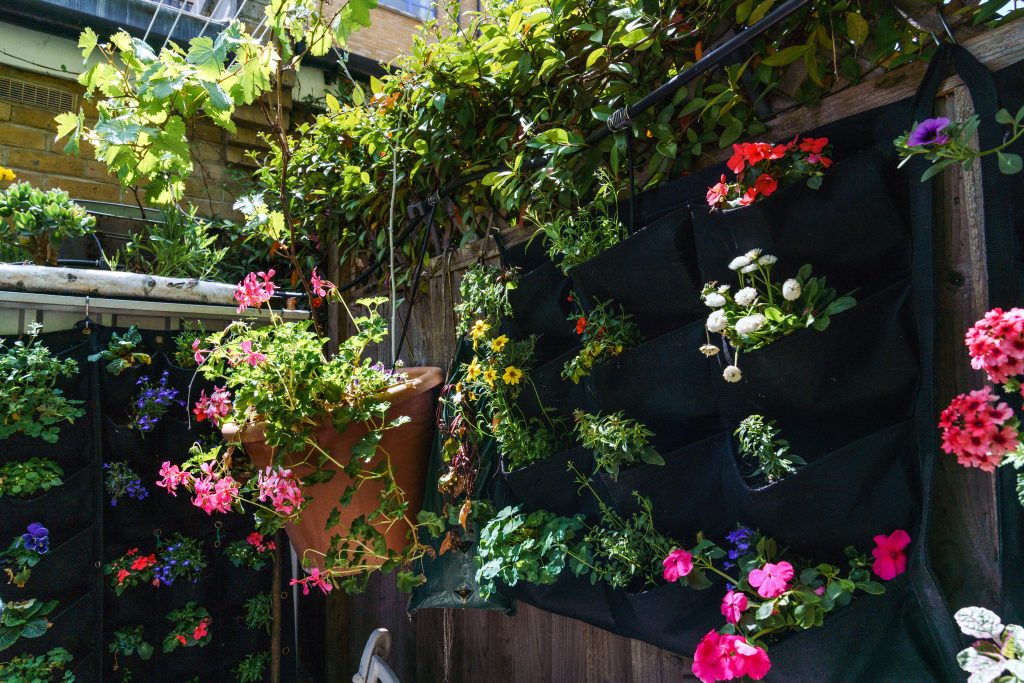
Spitafield Gardens, London © Julie Skelton
Hanging Baskets
Even the most cautious of you can think of putting out hanging baskets filled with tender bedding plants now. If you have them ready prepared in a cool greenhouse, they will look established straight away; otherwise, plant them up now with healthy plants.
Thinning Seedlings
Seed sown in spring in the flower and vegetable garden will be producing dense clumps and rows of new seedlings. Remember that you must thin these out so that you end up with evenly spaced plants. This is especially important for vegetables, to ensure the plants have the space to develop and crop properly.
Get Those Bedding Plants Out
In May it’s always a bit of a job to know when to put out annual bedding plants, especially tender ones, but the sages all say that by Chelsea Flower Show Week (just finished) you’re safe. If the weather looks promising, my advice is plant them out pronto, give them a good watering, and watch them grow.
Second Sowings
If you’ve got time and space, it’s often a good idea to do a second sowing of vegetable seeds. This should give you two fresh crops at a two or three week interval in late summer, rather than trying to continue with one large crop, when it has become over mature.
Throw on the Mulch
Even if we’re not heading for a heat wave – and let’s hope we are – you should try to conserve all the moisture in your soil, by keeping your borders well covered in organic mulch. When the heat turns up even more, this will continue to inhibit the weeds, and will also help your plants to go on looking healthy for longer.
Bulbs Make Way for Bedding
If you haven’t done it already, this is when you are going to be putting annual bedding plants out into beds, borders and containers. If you want to fill spaces where you had spring bulbs, just lift the bulbs, clean them off, and put them somewhere cool and dry to store. You will replant them in the autumn.
Sow Runner Beans
The recent weather has probably ensured that it is warm enough to sow runner bean seed outside, though you should ensure that the deep roots have rich soil containing plenty of well-rotted manure or compost. As well as being delicious, runner beans are also highly decorative, so plant the seeds around a wigwam – or make one yourself out of canes – and you can easily integrate the beans into a flower border, or even plant them up in a large container.
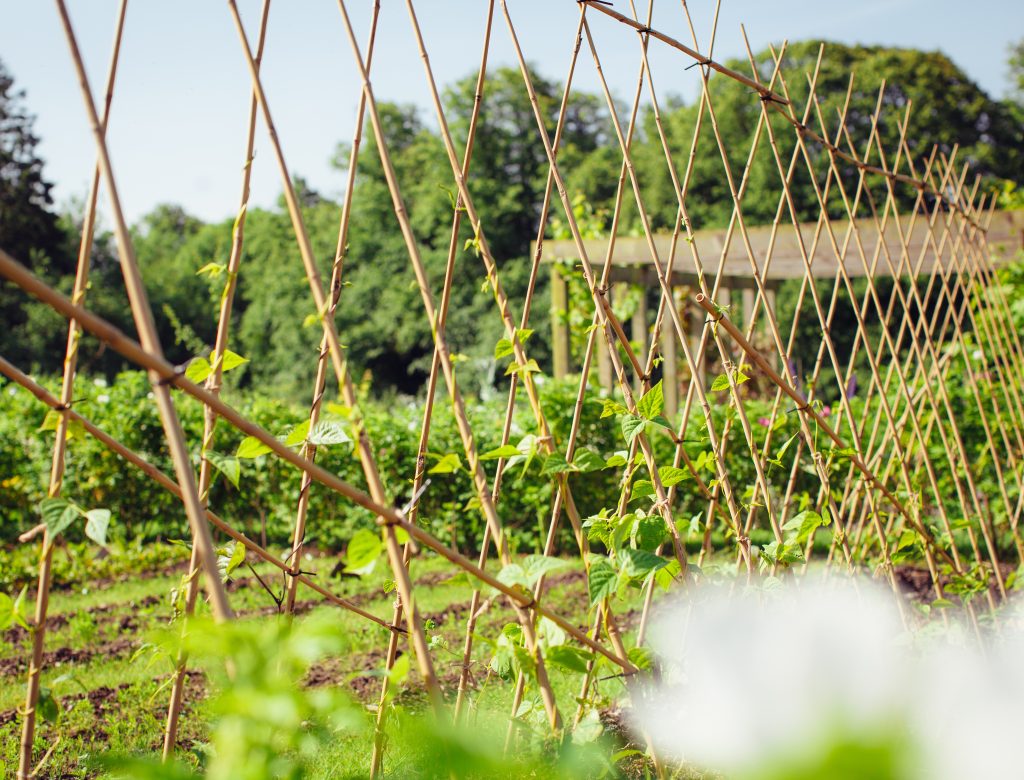
Pythouse Kitchen Garden, Kent


















